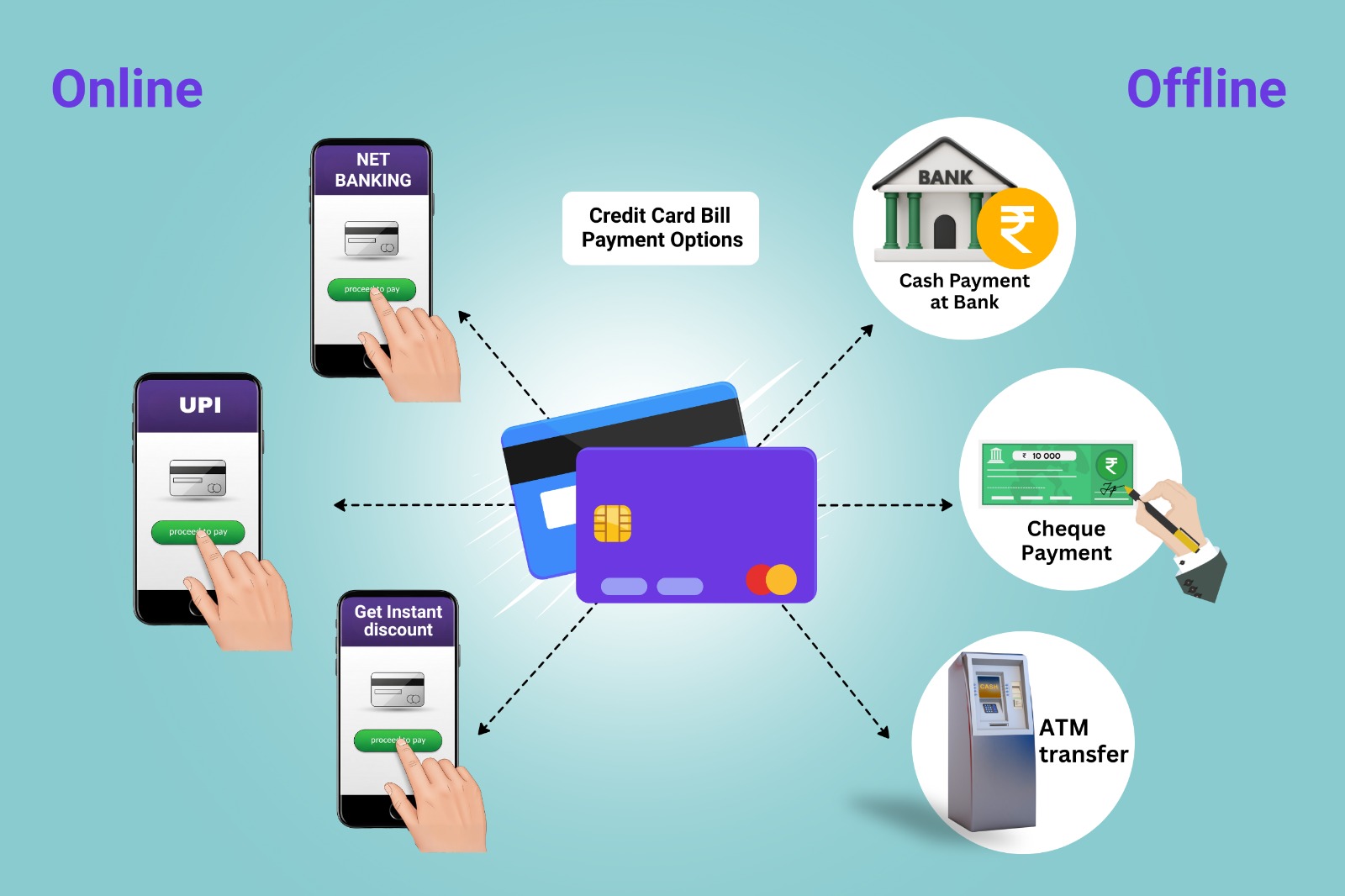 March 6, 2025
March 6, 2025
Paying your credit card bills doesn’t have to be complicated. Whether you're a seasoned cardholder or just getting started, understanding the available payment methods can help you stay on top of your finances and avoid unnecessary fees. Here’s a streamlined overview of both online and offline options to make your payments timely and hassle-free.
Online Payment Methods
1. Net Banking If you hold a savings account with your credit card issuer, simply register your card in your net banking profile and pay directly. Even without a linked account, you can open an internet banking account and make payments from there.
2. NEFT (National Electronic Funds Transfer) NEFT allows you to transfer funds from any bank’s net banking portal to your credit card account. Add your card as a beneficiary and enter the required details to initiate the payment.
3. Auto-Debit Facility Set up auto-debit with your bank to ensure your credit card bill is paid automatically on the due date. It’s a reliable way to avoid late fees and maintain a healthy credit score.
Offline Payment Methods
1. Cash Deposit Visit your credit card issuer’s branch, fill out a deposit slip with your card details and bill amount, and submit it along with the cash. Payments are typically processed the same day.
2. Cheque or Demand Draft (DD) Write a cheque or DD payable to your credit card account, include your name and contact number on the reverse, and drop it at a branch or ATM drop box.
Choosing the right payment method ensures timely bill settlement and helps you maintain financial discipline. Whether you prefer the convenience of digital banking or traditional offline options, staying consistent with payments is key to building and preserving a strong credit profile.